Sammaebong Peak (삼매봉)
15.2Km 2021-12-07
83, Namseong-ro 115beon-gil, Seogwipo-si, Jeju-do
+82-64-740-6000
Sammaebong Peak is residental park popular among tourists. Oedolgae Rock is located near the park, toward the southern sea. At the top of the peak, Namseongjeong Pavilion offers an expansive view inclusive of Beomseom Island, Munseom Island, Saeseom Island and Seopseom Island, in addition to Marado Island and Gapado Island to the west. Baengnokdam Lake seems nearly within reach to visitors looking out from the peak.
Legend has it that if you stretch your hands toward the sky at night, Canopus (the second-brightest star) is almost within reach. The place is regarded as one of everlasting youth, as Canopus is associated with lifespan. Visitors can exercise and enjoy at walk at the park during the day and in the evenings.
Geumsan Park (Nabeup Subtropical Forest Zone) (금산공원 (납읍난대림지대))
15.3Km 2022-12-29
Nabeup-ri, Jeju-si, Jeju-do
+82-64-740-6000
Geumsan Park is a dense evergreen forest near a village in Aeweol-eup, Jeju-si. The forest is the sole evergreen forest remaining in the flatlands of western Jeju, and is home to tall evergreens and 60 species of subtropical plants. The forest is preserved and protected as a Natural Monument and a natural resource for academic research. Collecting plants and hunting in the forest are strictly prohibited.
Oedolgae Sea Stack (외돌개(제주))
15.4Km 2024-12-31
Seohong-dong, Seogwipo-si, Jeju-do
+82-64-760-3192
Oedolgae Sea Stack sits not far from the shores of Sammaebong Peak in Seogwipo. It is an amazing rock 20 meters in x_height and is estimated to have formed approximately 1.5 million years ago. The fantastic rocks of the coastal cliff around Oedolgae and Sammaebong Peak provide the perfect background for trekking. The sunset of Beomseom Island, which can be seen from Oedolgae Sea Stack, has long been an admired view for people visiting Jeju Island.
Moseulpo Jungang Market (모슬포중앙시장)
15.5Km 2025-12-18
9-8 Yeongseojung-ro 13beon-gil, Daejeong-eup, Seogwipo-si, Jeju-do
Moseulpo Jungang Market, located in Seogwipo, is known for having been visited by the cast of the Korean TV program "House on Wheels." Although it is a small-scale market, it offers fresh seafood and daily necessities. Mung bean pancakes, sea urchin, and gimbap are popular foods to enjoy here.
Sinchang Heukdwaeji Duruchigi (신창흑돼지두루치기)
15.5Km 2025-01-22
182 Dongilhamo-ro, Daejeong-eup, Seogwipo-si, Jeju-do
The restaurant specializes in heukdwaeji duruchigi (stir-fried black pork). When you order the heukdwaeji duruchigi, it is served on a hot iron plate after being cooked in the kitchen. You can add bean sprouts and green onions according to your preference and cook it once more at the table.
Chocolate Museum (초콜릿 박물관)
15.5Km 2022-12-27
144, Iljuseo-ro 3000beon-gil, Daejeong-eup, Seogwipo-si, Jeju-do
The Chocolate Museum in Seogwipo, Jeju is the second largest chocolate museum in the world (the largest being the Cologne Chocolate Museum in Germany). Built using volcanic scoria unique to Jeju, the museum looks like an ancient castle and seems to complement the surrounding natural environment. The front yard measures 5,000 meters squared and is surrounded by a low-lying fence made of rough stones, giving even passerbyers a great view of the museum's front garden .
At the entrance to the museum, a whimsical statue of a cacao god greets visitors. The museum has three floors and houses a gallery, a theater, a café, a workshop, and a chocolate store. The most popular exhibits are the gallery with various exhibits on chocolate and the workshop showing the chocolate-making process. The chocolate produced at the museum is available for both sampling and purchase. In addition, the 'Collection Square' features a wide array of chocolate cases and other items that Mr. Han Ye-seok, the museum director, has collected from around the world.
In the 'Chateâu Chocolat: Real Chocolate Place' chocolate shop at the Chocolate Museum, visitors can get a taste of hand-made chocolates. The Chateâu Chocolat is a retail chocolate chain with franchises in Gyeongbokgung, Apgujeong, Itaewon, and Changdeokgung in Seoul, and Yangyang and Somdari in Gangwon-do.
Homeplus - Seogwipo Branch [Tax Refund Shop] (홈플러스 서귀포)
15.6Km 2024-04-22
180, Jungang-ro, Seogwipo-si, Jeju-do
-
Hamo Beach (하모해변)
15.7Km 2021-06-24
Choenamdanhaean-ro, Seogwipo-si, Jeju-do
+82-64-760-6000
Hamo Beach is located near Moseulpo Port, and is sometimes referred to as Moseulpo Beach. The beach used to be open for swimming but a variety of issues caused the beach to close for safety. The beach is located along Jeju Olle Trail Course 10, and features a campground nearby. The campground is a paid service and requires advance reservation during peak season. In summer, visitors can enjoy sea walking here, a water leisure sport featuring a diver's helmet. Across from the beach is a field of sunflowers standing before Sanbangsan Mountain.
Seonimgyo Bridge (선임교)
15.7Km 2024-02-22
27 Saekdal-ro 189beon-gil, Seogwipo-si, Jeju-do
Seonimgyo Bridge is a 130-meter-long arched iron bridge connecting Cheonjeyeonpokpo Falls to the Jungmun Tourist Complex. Legend says that the Seven Fairies descended from the sky and landed on the bridge, hence earning the name "Seonimgyo." The bridge is also known as the Fairy Bridge or the Cloud Bridge, and there are statues of the Seven Fairies on both sides of the bridge. Thirty-four stone lanterns between the 100 railings make it a beautiful night view spot.
Negeori Sikdang (네거리식당)
16.0Km 2024-03-12
20 Seomun-ro 29beon-gil, Seogwipo-si, Jeju-do
+82-64-762-5513
Negeori Sikdang, located on Seogwipo's Arangjoeul Food Street (Gourmand Alley), specializes in seafood and fish dishes. They use fresh cutlassfish and mackerel caught from the waters of Jeju. Their signature dish is galchi gui (grilled cutlassfish). Additionally, they offer delicacies like seonggeguk (sea urchin soup), okdom miyeokguk (red tilefish and seaweed soup), and okdom gui (grilled red tilefish), which are all traditional Jeju dishes. Nearby attractions include Oedolgae Sea Stack and Cheonjiyeonpokpo Falls.
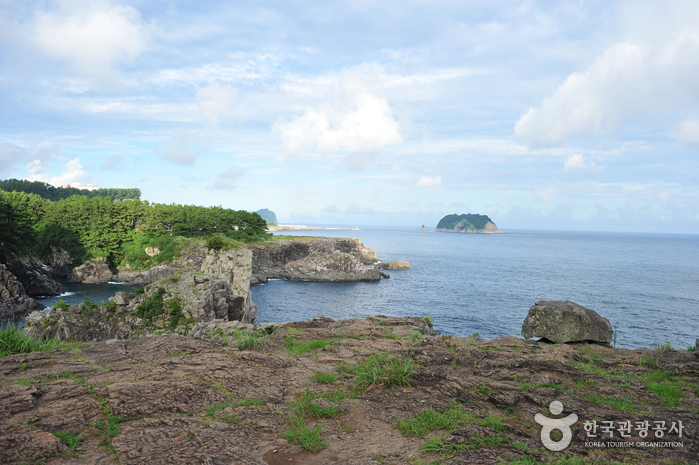
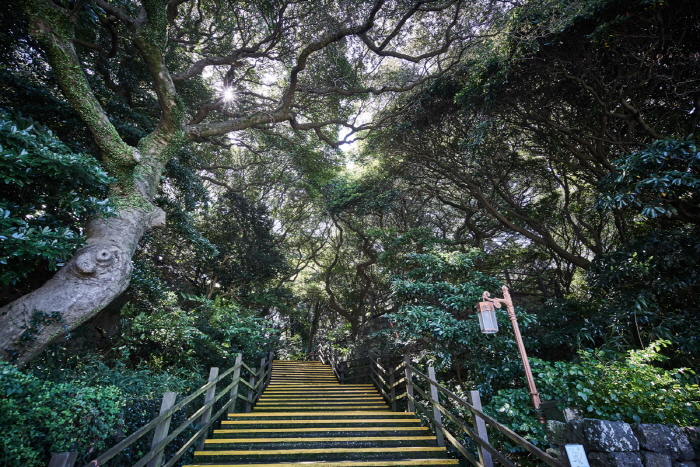

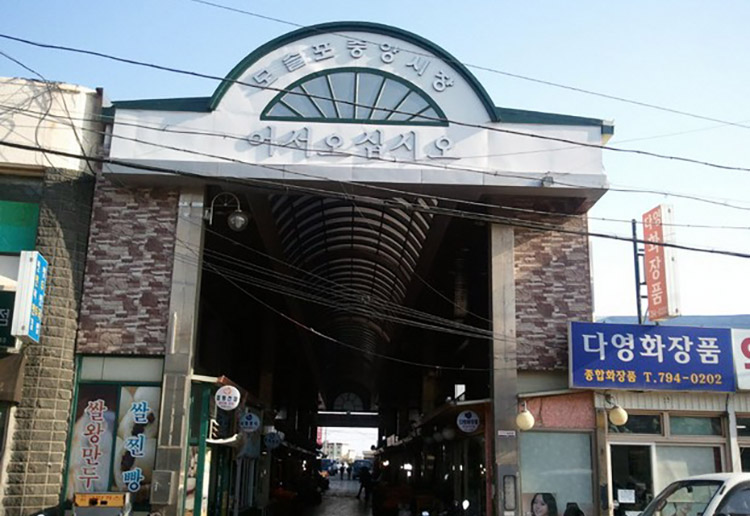

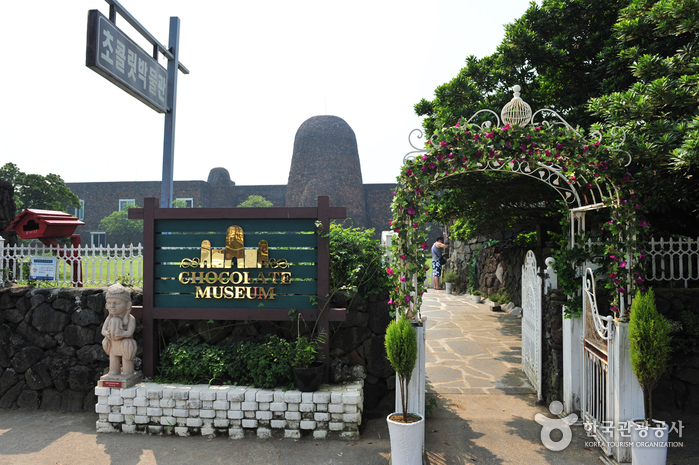
![Homeplus - Seogwipo Branch [Tax Refund Shop] (홈플러스 서귀포)](http://tong.visitkorea.or.kr/cms/resource/88/2887688_image2_1.jpg)
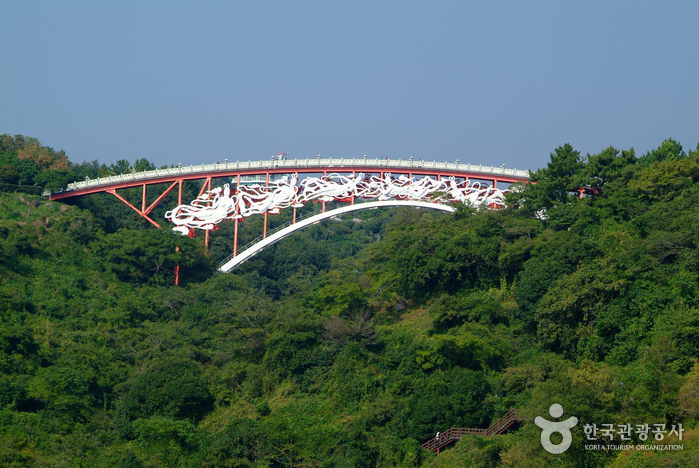
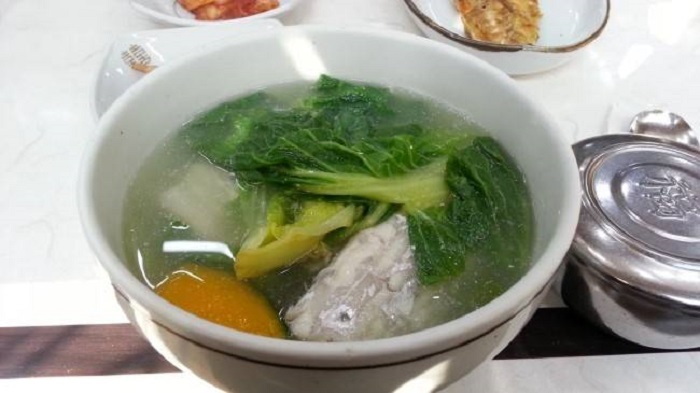
 English
English
 한국어
한국어 日本語
日本語 中文(简体)
中文(简体) Deutsch
Deutsch Français
Français Español
Español Русский
Русский